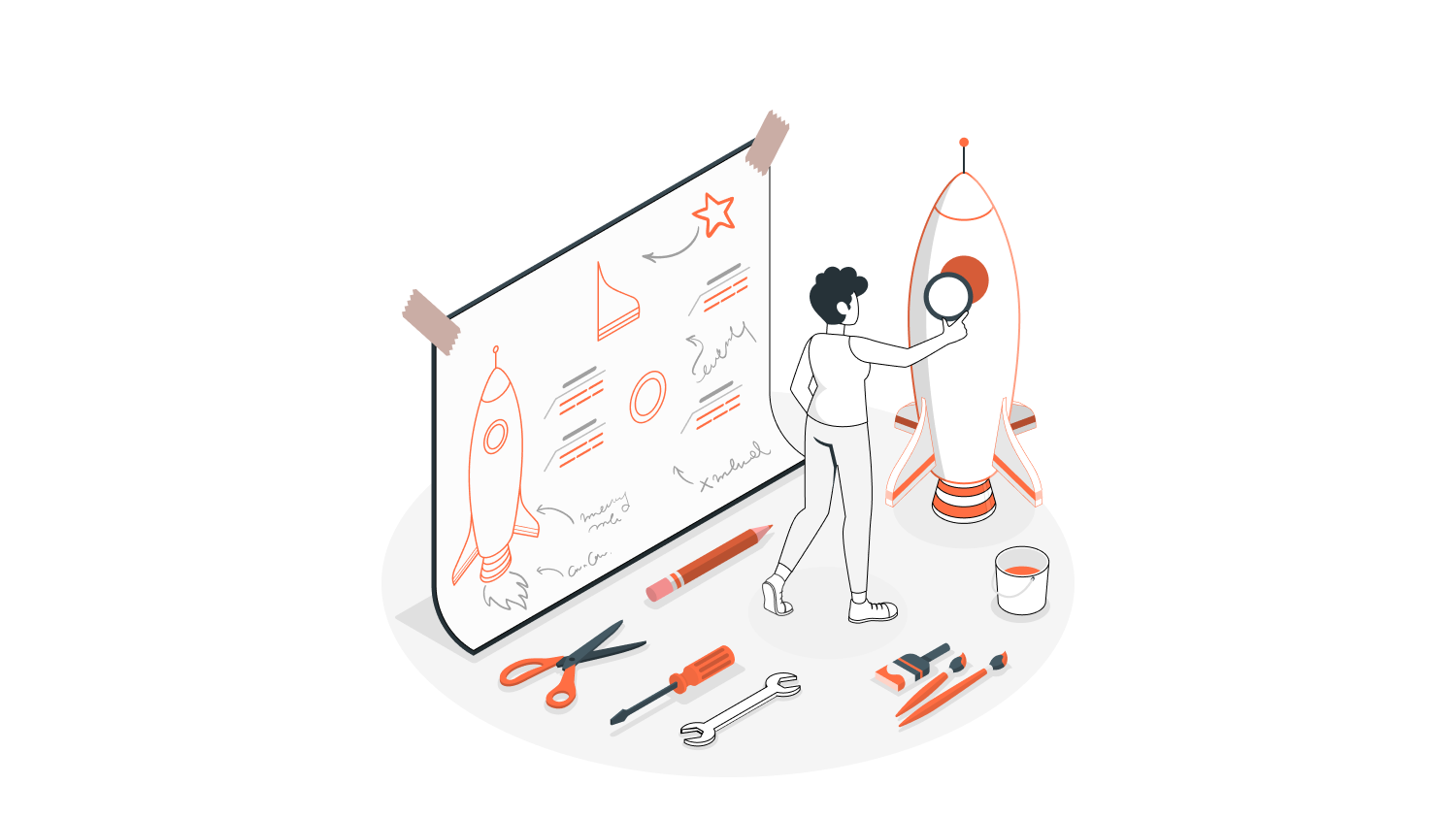Every start-up begins with a great vision and great idea; however, the journey from ideation to launch is a very hard and long process. And these days higher competition, consumer demand, and technological innovation have called for businesses to launch market-ready services and products which are more efficient and cost-effective.
MVP development is a product management concept for start-ups that works exceptionally well when bringing a new product to the market. The main aim of creating an MVP is to deliver a product with bare functionality that will meet the essential needs of the users and solve a specific problem efficiently. Creating MVP product development is not a new term for businesses, yet it is perhaps more critical for companies now than ever before. As the need for digital products in the world is on the rise, it is important that companies are swift and more customer-focused. The MVP methodology helps create a more structured, reliable, agile, and cost-efficient approach to acquire real customer insight.
Advantages of Minimum Viable Product (MVP)
-
-
- Clarity of vision
- Focus on core functionalities
- Evaluates User Experience & Performance
- Allows testing of business concepts
- Verifying Market Demand
- Developing A Monetisation Strategy
- Testing UX and Usability
- Faster release
-
Incorporating the MVP software development has brought the opportunity for various start-ups to enter into the market with a test or sample product, saving on time, costs, and resources.
From Facebook and Airbnb to Amazon, Twitter, Instagram, Spotify, most of the current platform giants are the biggest examples who have transformed simple ideas via MVP into major corporations recognized globally.
If you are an entrepreneur who realises the importance of a minimum viable product and is now looking to build one for implementing your idea, then here is the step-by-step guide where we shall discuss the entire process of converting your idea into an MVP.
1. Market Research
Before thinking about the MVP, check the potential of your idea. Your idea might be great but it may not just fit the market needs.
To know more about this, search for competitors or similar products because the survey always works and leads you to more information.
Also read about How to Do Market Research for a Business Startup?
2. Define your Idea & Identify the Critical Point
You have an idea about your new app but before building an MVP, you need to figure out the problem you want to solve and find who you are aiming at.
Simply creating an MVP with many features without a primary reason often leads to failure and capital loss. Therefore, a good way to start is by finding answers to the following questions:
-
-
- Why do I need to create this product?
- How can the product help customers?
-
By answering these questions, you will get an insight into the main goal of your product, and through this, you can find the best solution for your customers’ needs.
Here are the 10 Easiest Ways to Find Winning Product Ideas Every Time.
3. MVP Approach Selection
At this step, pick the most appropriate MVP approach based on the idea to be validated and the available resources.
a) No-product: This is a no-coding approach that requires no technical knowledge as the development of a product is still an idea of visualization.
-
-
- Idea visualisation
- Sell first, build afterward
-
b) Product-mockup/Product-based MVP: This type of MVP ensures to deliver the primary concept of the future product.
-
-
- Concierge
- Wizard of Oz
-
c) Single-feature MVP: This is built with the idea of delivering a single feature.
d) MLP: MLP focuses on adding beauty to the MVP app, by improving UI/UX with attractive visual appeals, micro-interactions, etc.
Learn How to Prioritize Features for Your MVP in 2021.
4. Find the Ideal Users
So, as you set to build your product, it’s important to map out the user journey. Think about where the best place would be to test, and get feedback on your app before you go for the final deployment.
This can help you make sure if there’s a demand for the product in that particular area and if your target users can afford to use it in the future (once you start monetising).
5. Create the Pain-and-Gain Map
Now, this particular process allows you to identify all major user pain and gains the user archives when they are addressed.
These mapping tactics help you determine the area where you have the highest potential to add value. Thus, you can focus on these areas while keeping aside the less impactful points to your product roadmap for future releases.
6. Prioritise the App Features
At this point, you need to decide which features are the most important ones for your Minimum Viable Product to validate your business idea.
7. Develop your MVP
After you have defined the scope of MVP, it’s now time to start the iterative process of development. Remember, the MVP needs testing throughout the development process.
Prior to deployment, make sure the final product functions properly.
8. Test, Learn and Repeat
After defining and developing the MVP, let your product get tested for quality assurance to improve the product. Later, launch your MVP, check out the user’s feedback; repeat the process and work towards the upgrades of your product.
Do not make your product complex and don’t forget to enquire to your customers what extra features are they looking for in the product.
9. Measure Success
Some of the effective ways to get a real picture about your MVP product are by a word of mouth, evaluating engagement, ask your users to sign-up with your product, check out the downloads, see how many users are actively using it, analyse client acquisition cost (CAC) or check the users who are interested in your product.
Wrapping Up
The success of any start-up business often depends on the minimum viable product they create. MVP software development is a sure-fire strategy to test your idea on the market rather than complicated development, which reduces the risk of investing money in a product that your target audience is not interested in.
Apps are no small undertaking. So, before you go ahead with your idea, you should consider launching a minimum viable product (MVP) instead. It is the only way you’re going to know if it’s a product worth pushing out to the market.
Do you still have any questions about how to build, improve, and pivot an MVP? Then get in touch with us we are one of the leading MVP Development Companies in Salt Lake City, Utah, USA. Our team of software experts aims at building scaled MVP products with a strong market presence.





